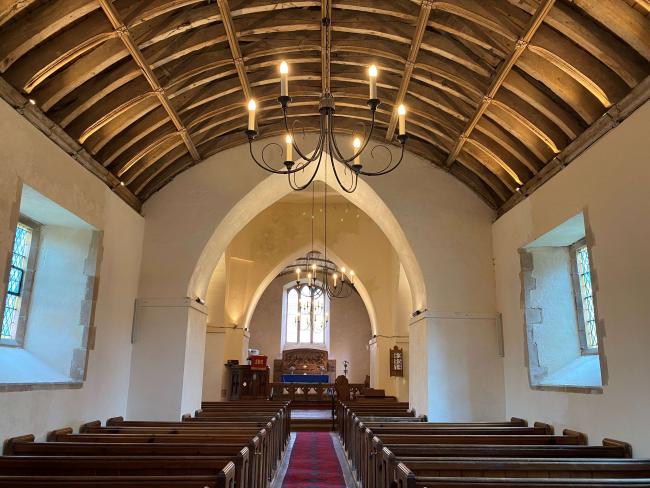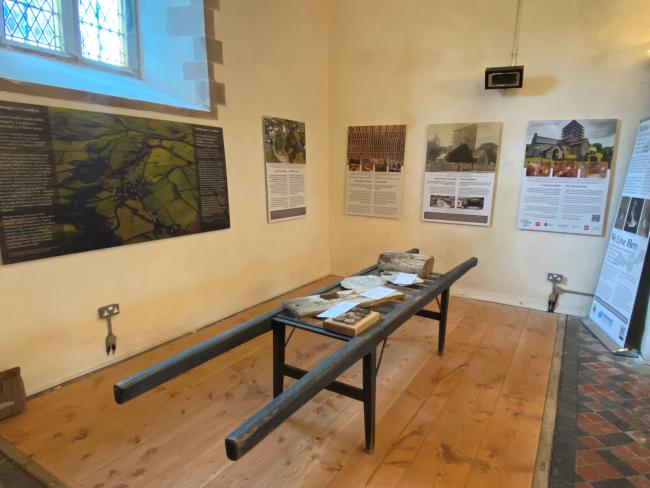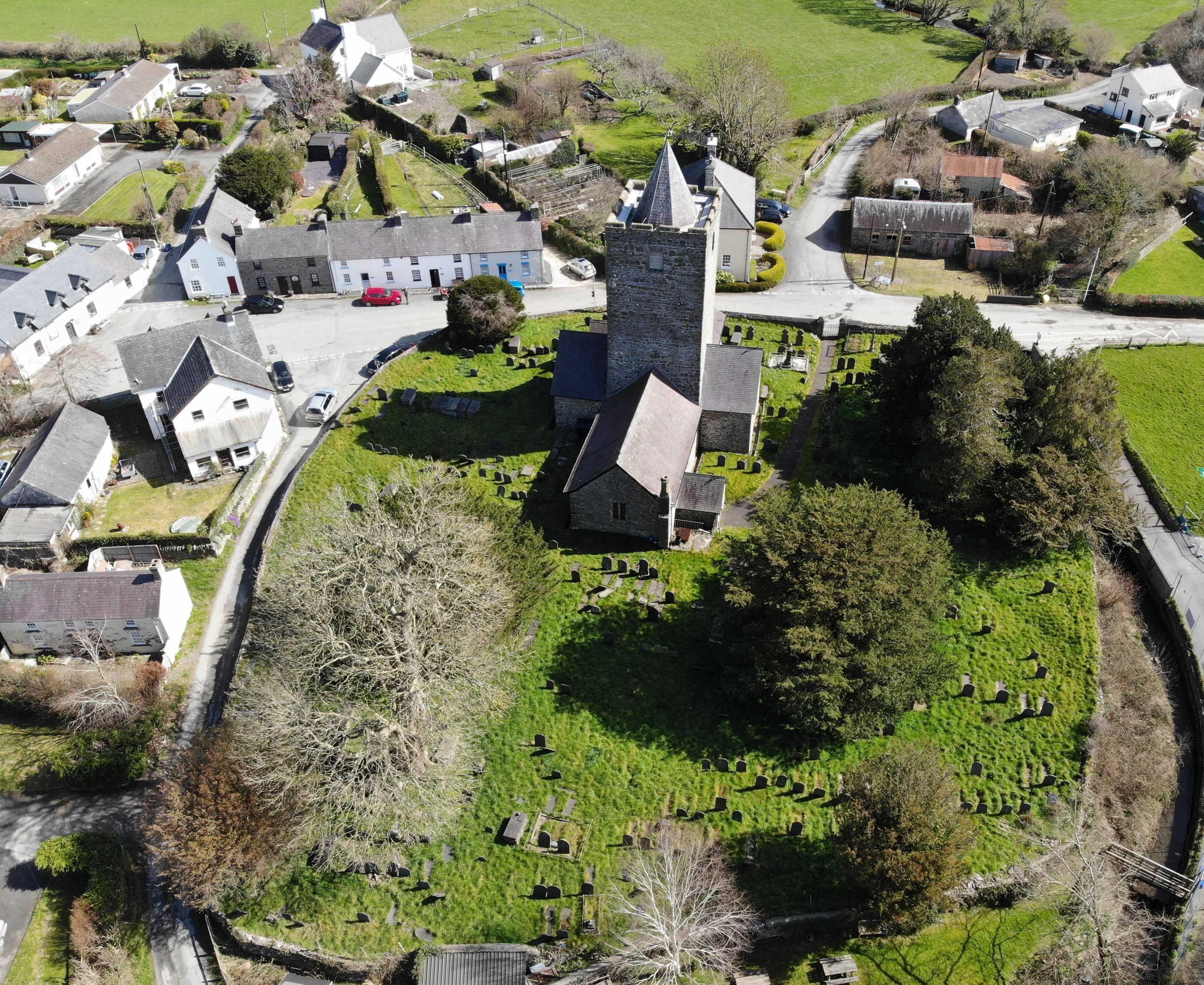"It’s not enough to save heritage – you have to live it,” shares Peter Garson, the project coordinator from St Michael Church in Llanfihangel y Creuddyn, Wales/Cymru. It was this sentence that changed everything for the church – and helped catapult it into a brighter future for everyone.
Rejection
St Michael’s is a beautiful Grade II Listed church in the heart of Llanfihangel y Creuddyn, a small village in north Ceredigion.
In 2015, the Parochial Community Council – a team at St Michael’s that helps to care for the church – began initial investigations into the tower's increasing dampness. And from that, it was clear that work was urgently needed to help prevent further water damage and to make repairs to the tower.
“The project... began as a repair job to stop water leaking into the tower, but became so much more than that, largely because our first grant applications to the National Lottery was turned down,” shares Peter.
“I would like to thank the National Lottery for rejecting it.”
Revelations
The team went back to the drawing board, starting with finding out more about the church building itself.
Louise Barker – a local archaeologist – began investigating the building, along with her team.
“They examined records, inspected every detail of the building, dated the timbers, took hundreds of photographs and used drones and laser scanners to build up a comprehensive record of the building,” explains Peter.
“Their work confirmed that this is indeed a very special church dating back to the 13th century and that the large tower standing over the central crossing and the magnificent oak roof are all original... for all this to survive so well is very rare.”
These exciting insights were then shared at a public meeting at YFfarmers, a local pub a short walk from the church.

Community support
“It was clear how strongly the community felt about its own history and about the church – and how much knowledge and information some people held and wanted to share,” continues Peter.
“The community wanted the church to be put back in good order and to be able to appreciate its special qualities.
“The most striking feature of the church – the massive tower – is a much-loved local landmark. Yet despite standing over the village for over 700 years, most people who have lived here all their lives had never been up it – and for very good reason. It was dark, damp and dangerous and even if you climbed the wonky ladders to the middle and upper floors, there were plenty of gaps and rotten floorboards to fall through.
“Even so, the feeling you got when going up there was amazing – a sense of stepping back centuries which gave you goosebumps.”
Permission to dream
“So, we started to imagine how this tower could be made accessible and our architect Frans Nicholas designed new staircases to allow public access to the top floor of the tower and he put together a scheme of work to resolve dampness in the south and west faces of the tower,” says Peter.
“There was input from various specialists, including a structural engineer and bat ecologist and we had days and days of free help from Andrew Davies and Matthew Walley of Afan Electrical who developed detailed plans for completely rewiring the church including better lighting, fire alarms, internet, electric heaters under the pews – a good reason to sit in the front half of the church in winter!
“We now had the makings of a community heritage project that would make repairs and improvements to the church while also developing new ways for the community to share its heritage.
“It had the sort of ambition that the Heritage Fund were looking for and we submitted our application along with much technical detail and many letters of support. The award of a Heritage Fund grant of 75 per cent of the cost made all this possible and we began to apply for match funding and for consents to undertake the work.”
![[From left to right] Denise Lewis-Poulton from the National Lottery Heritage Fund and local representative Elin Jones AM with Peter Garson at St Michael’s Church celebrating the completed project.](/sites/default/files/styles/max_650x650/public/2024-01/CeredigionLLANFIHANGELYCREUDDYNStMichael%28stmichaelchurchPERMISSIONBYEMAIL%294.jpg?itok=uR_nkv8X)
No stopping the church
“There were many twists and turns along the way as old buildings have a habit of throwing up unexpected surprises and not in a good way, and this added to the difficulty and cost. In particular there was a lot more rotten timber in the tower than we had imagined. All the beam ends needed repairing or strengthening and all the floorboards needed replacing before the new stairs could be put in place.
“We are especially grateful to the National Churches Trust, who are an excellent and very practical charity, dedicated to helping communities to look after churches and making them open to all,” shares Peter.
“[The National Churches Trust] were the biggest provider of match funding and when things got tough, their members voted us an additional £10,000 to help towards the extra costs, which was a big help.”
Even Covid-19 didn’t stop the church. The building work began in 2021, but the conversations with the community moved online, so that they could still be involved in the exciting project that was happening at the church. People were encouraged to share historic photographs, documents and stories on a Facebook group and together, they were able to piece together even more local history about the church through the ages.

Open for all
The church has now not only finished all of the building and repair work – but it is open regularly and has turned itself into a tourist destination, attracting visitors from near and far.
“We have taken a big step forward and the church is ready for the wider community to make greater use of it and to treat it as the centre piece of the community's heritage,” says Peter.
“There is now an interpretation area in the south transept where the history of the church is now described in large bilingual interpretation panels on the walls, along with artefacts which visitors can touch and read about. Free WiFi gives visitors access to further information and film clips about the church.”
Many of the photos used – including in the timeline of the church – are ones that the local community shared during the pandemic on the Facebook group.
“The large tower has been made accessible for the public for the first time,” continues Peter. “A tour up the tower is now a must-do heritage experience for local people and visitors alike. The new architectural staircases and new oak floorboards contrast with the ancient stone walls, oak beams and bell frame, giving an exhilarating sense of going back in time. The louvres on the top floor now tilt to offer wonderful views across the valley.
“We are now promoting the church more actively, including through social media and by listing on TripAdvisor. We have secured the support of local tourism promotion bodies like Pentir Pumlumon and the Cambrian Mountain initiative, who are now including it in the Cambrian Mountain Heritage Trail. The church is featured in the National Churches Trust’s Exploring Sacred Wales – Coastal Way trail and we undertook training from them as part of that initiative.”
Tower Tours could provide an income stream to help maintain this wonderful church. And it is something that never would have happened had the church been accepted for their original grant. Their dreams got bigger – and so has the future of this church.
For Churches – top tips for your place of worship
-
Do not give up. Having a grant application turned down is tough. The UK’s churches, chapels and meeting houses are precious and worth saving. Pay attention to any feedback if it's been offered and see how you can reflect this in your next grant applications.
-
Get the community involved. Ask them what they need from your church building and see how you can deliver it. This could include making your building more accessible and plans that help even more people enjoy the space and the heritage.
-
“It’s not enough to save heritage – you have to live it.” Your church, chapel and meeting house has the potential to be even more amazing than it already is. Draw out in your plans – and then in your grant applications – how your place of worship will not just be repaired by the grant but how your building will be used and enjoyed by the community and by visitors. Include in your application any support you have from the community for your plans.
-
Explore tourism options. Churches, chapels and meeting houses are treasure houses of heritage, history and community. The potential for them to attract visitors and for visits to be enjoyable and worthwhile is huge. Every single one has some aspect of architectural, cultural or social heritage significance. And tourism can provide an income stream for the church. Your building should be open for people to visit. From interpretation panels to guided tours, listing your opening times online, there are many ways you can make your place of worship attractive to visitors. We also have this guide that can help you to create the perfect welcome.

